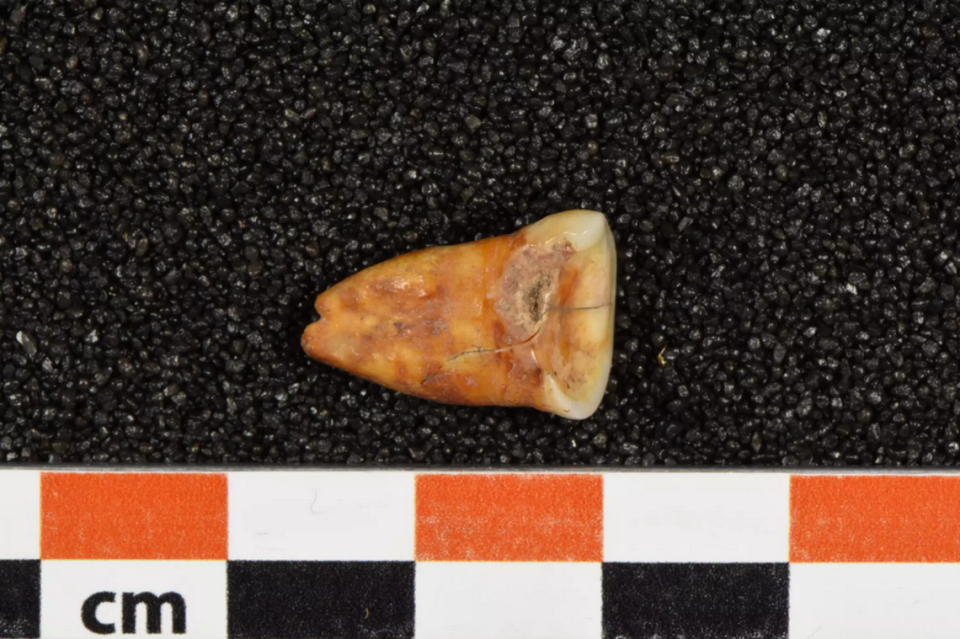15,000-year-old tooth discovered in cave in Morocco — revealing surprise ancient diet
The cave of Taforalt in Morocco is thought to be one of the oldest and largest human cemeteries in northern Africa, holding the final resting place of people from tens of thousands of years ago.
Inside, the bodies from the Iberomaurusians, a hunter-gatherer culture, date to the Late Pleistocene age, around 15,000 years ago and before the development of agriculture in the region.
With the remains are incredibly well preserved teeth, holding the keys to understanding their ancient diets — and they may have been more gatherer than hunter.
In a new study published in the journal Nature Ecology & Evolution on April 29, an international team of researchers analyzed the isotopes in the prehistoric teeth to learn what was on the menu in 13,000 B.C.
“It has long been thought that meat played an important role in the diet of hunter-gatherers before the Neolithic transition,” according to an April 29 news release from the Max Planck Institute for Evolutionary Anthropology. “However, due to the scarcity of well-preserved human remains from Paleolithic sites, little information exists about the dietary habits of pre-agricultural human groups.”

Uncover more archaeological finds
What are we learning about the past? Here are three of our most eye-catching archaeology stories from the past week.
→ Farmer loses plow part in Polish field — then finds historic artifact during search
→Divers remove ancient Roman cargo from shipwreck — and find unique carvings. See them
→ Metal detectorists find ancient portrait in Danish field. See the 'legend' it depicts
The researchers took a closer look at the chemical composition and isotopes in the teeth of the ancient societies to see what they may have been eating, according to the study.
Plants and animals are full of different elements like carbon, nitrogen, zinc and strontium, so when they are consumed, those elements go into the person eating them.
Those elements build up over time, allowing researchers to measure their percentage and tell how much of a person’s diet was made up of plants versus animals, according to Frontiers for Young Minds.
The ratio of nitrogen, for example, gets higher as you go up the food chain. A plant would have a low ratio, then an herbivore who eats lots of plants would have a higher ratio. A predator who eats lots of herbivores would have an even higher ratio of nitrogen.
In Morocco 15,000 years ago, whatever the Iberomaurusian culture ate built up in the teeth now left behind in the burial cave.
“The study’s major conclusions clearly show that the diet of these hunter-gatherers included a significant proportion of plants belonging to Mediterranean species, predating the advent of agriculture in the region by several millennia,” according to the release. “Archaeobotanical remains found at the site, such as acorns, pine nuts and wild pulses, further support this notion.”
The researchers analyzed teeth from people of varying ages, including young children and infants who were buried in the cave.
The young teeth also had similarly high concentrations of plant-based isotopes, suggesting “plant foods were also introduced into infant diets and may have served as weaning products for this human population,” according to the release.
The study is the first of its kind to analyze zinc isotopes in the enamel of ancient teeth, according to the study, allowing for a more in-depth look at the prehistoric diets than ever before.
The findings also raise some questions.

Human cultures during this era of history were thought to rely heavily on meat for sustenance because agriculture had not yet been established in North Africa, and hunting gave people more “bang for their buck,” meaning it provided lots of protein for less energy than gathering plants and nuts, according to the study.
These findings suggest for the Iberomaurusian people this wasn’t the case, and they may have been beginning the shift to a lower reliance on meat, but the researchers aren’t completely sure why.
Eating lean meat, like game animals, is the basis for the popular “paleo diet,” but there is a chance that the availability of these animals decreased during winter months, according to the study, requiring people at the time to spend more energy collecting plants and nuts that could be stored through the winter.
Sheep were a commonly hunted animal, according to the study, but there isn’t evidence that their population was in decline during this evolutionary period. There also may have just been a larger abundance of edible plants in their area, making the effort of collecting them worth the people’s time.
“Our study highlights the importance of the Taforalt population’s dietary reliance on plants, while animal resources were consumed in a lower proportion than at other Upper Palaeolithic sites with available isotopic data,” the study authors wrote.
Taforalt cave is in northwestern Morocco, just south of the Alboran Sea.
Turtles may have been taken by ancient humans while traveling — and eaten as snacks
3,400-year-old site — where the Pharaoh relaxed — unearthed in Egypt. See the ruins
‘Rare’ statue sat hidden in dried-up pond at 800-year-old temple — until now. See it
Workers unearth steelworks at medieval castle in UK — and find someone’s ‘hidey-hole’

